Final stage of the world cruise Busselton in Australia back to Southampton 35 days.
The lost and found Bookshop
Susan Wiggs
Quick and absorbing book, a light read that swiftly moves you through a heartbreaking family tragedy. With the centre character taking control of a cash strapped bookshop and caring for an ailing grandfather.
Besides walking round the deck, Tia chi, eating, drinking, relaxing, reading the odd book, listening to a vast array of musicians, how do we spend our day.
Well we have CUNARD INSIGHTS.
Amazing talks aptly called Cunard Insites, enabling us to while away our sea days. Spending up to five hours during the first half of the day ensconced, often missing out on lunch, not a hardship. Helps the old waistline.
So many interesting topics available, albeit not always understood, especially with Astronomy that delves into pure mathematics, algebra and various theorem formula.
Yet saying that, Paul Fellows FRAS seemed to uncloak many of the mysteries, especially in his methodical way in which he took you through each subject. Fascinating to say the least. Now have a reasonable understanding on how they determined the position of stars and even why a black hole hasn’t any light inside. Mind blowing.
The mixture of talks stretch your mind through such things as European History, Joan of Ark and Lawrence of Arabia.
Into the ocean world and marine life and the effects of pollution and plastics, to mention just a few.
Truly amazing tales from explorers such as the sailor Pete Goss, MBE a British yachtsman who sailed more than 250,000 nautical miles. A former Royal Marine, famous for his pioneering project Team Philips. His amazing story telling takes you through a fascinating and scary life on the waves. He was given the Legion d'Honneur for saving fellow sailor Raphaël Dinelli in the 1996 Vendée Globe, solo around the world yacht race when he turned his boat around to go and rescue the stranded yachtsman in unbelievable seas. Some of the clips of the seas silenced the audience. I wouldn’t want to go through such seas on the QM2, let alone on a single handed yacht that was only 50 foot long.
Then we had the amazing South African explorer Riaan Manser who cycled around Africa, and if that wasn’t enough he rowed more than 22,000km over the Atlantic and Pacific Oceans. Rowing from Morocco to New York City, and from San Francisco to Hawaii with his wife - for their honeymoon! Brave women.
Heart wrenching talks from famous celebrities like John McCarthy - Writer and Broadcaster, about his experiences being held hostage for over five years in Lebanon in the late 1980s and Sir Bob Geldof on his life and career, expletives and all. Andrew Jarrett - Professional Tennis Player, Coach & Official with tales about famous players. "You Cannot be Serious, (When it All Goes Wrong on the Tennis Court)"
In depth studies on Popular Music covering, Frank Sinatra, Dean Martin, Nat King Cole and the Beatles, and much more. Great sounds, videos and photos supporting the often fragile route to success.
We had lectures from military historians, maritime specialist including the architect who designed the QM2. Experts on forensic medicine and archeology and sci-if writers and their take on getting into space, living in space, settling on other worlds and reaching the stars and beyond.
But heading towards Africa it was appropriate to have an African Wildlife Specialist. Gavin Robinson opened my eyes to what is necessary to run and operate a successful safari park.
You don’t realise what’s involved until someone with an in-depth understanding of animal behaviour and land management paints the picture. Highlighting the eating habit of various grazing animals, those that are particular, and those that will eat anything in their path. And the difficulty in ensuring that the numbers and breeds match the food available. Checking the numbers and condition of each breed, selling excesses off and buying new breeds or breading stock in.
Then into how the elephant plays a big part in the African ecosystem but has to be managed so as not to cause damage to its own environment. As well as how to educate the locals, introducing the farming of crocodiles and ostrich, to provide an alternative to poaching. Providing food and an income.
And that’s just in the last sector covering around Australia and onto Africa. Exhausting but highly enjoyable.

Port Louis Mauritius
After seven days sailing on a perfectly blue sea we find ourselves in Mauritius. Port Louis. The terminal is an array of white marquess with a welcoming group of dancers to greet us.
Traffic is horrendous so we understand why it takes 25 minutes just to get to the shopping mall. It’s literally only spitting distance from the ship, but the road winds around the docks and warehouses before coming to a halt at the lights to get onto the motorway. From here we are grid locked, until at long last, another set of lights goes green. Then everything, cars, trucks, vans, and bikes put their pedal to the floor. A blue haze of exhaust fumes momentarily clouds our visibility. Our ancient mode of transport is left standing as all the other vehicles zoom into oblivion. Yet the volume of traffic and number of lights mean we soon catch them up. We nestle ourselves into the stationary hoards to await the next grid start. And the procession starts again. Eventually find ourselves in a modern harbour front filled with tourist shops, restaurants and bars. Yet first thing in the morning it was asleep, nothing was steaming. Wouldn’t come to life until after lunch, so we head out. We are on the wrong side of the motorway to get into the old centre, but as we walk towards it we come across a smart tram service heading to Curepipe located towards the East on the central plateau. So of course we jump aboard and head out. A single ticket cost the equivalent of £1.95 for a single journey for the two of us. 30 minutes on a comfortable tram looking out over the urban sprawl. Well worth it.
Whilst on the tram the views out of the windows were just wall-to-wall buildings most of which were fairly modern showing a degree of affluence, fairly European in style. In fact, you could imagine travelling through rural Spain as we headed away from the coast. That is until we reached Curepipe, when it swiftly changed to a more Asian feel. Not surprising when you consider its on the main Indian Ocean trading routes.
As we moved away from the modern tram system and down into the main square we emerge into a more seedy and unstructured environment. Most of the buildings show signs of algae, green mould spreading across the buildings, presumably caused by the high humidity.
Walk through the indoor market full of vegetables, wonderfully coloured, fresh and enticing. Surprised to see that the majority of meat is either poultry or venison. Sellers sit next to their cuts of meat and fish, swatting at the circling flies, keeping them from landing. Most are unrefrigerated, yet It didn’t smell at all and everything was spotlessly clean. Nevertheless, pleased we have our own food supply on the QM2.
Most people seemed to be speaking their creole language, yet in the shops most spoke English or French. Considering that the French and British occupied the island from 1700, it’s not surprising.
Some of the pavements are made up from solid blocks of lava, very attractive yet well worn. But this quickly deteriorated into concrete slabs that had fallen into disrepair. You can understand why when you observe the inpatient lorry drives mounting the pavements to get by turning traffic. The locals seem adept at avoiding the ever present danger, plenty of practice.
As we turned into the shopping street you had a sense of entering little India. Street food operators, sari clothing stores, shoemakers, hardware shops, in fact everything you could ever wish for. Yet across the street could be found a luxury mall with around 20 upmarket shops. All seem to be struggling. That is with the exception of the central food court. Six or seven European restaurants. These were busy, serving suited business people and affluent families. Totally at odds with the general working class atmosphere that you initially sense whilst walking around the town.
Notice a mixture of Roman catholic churches Hindu temples and mosques dotted around. Turn a corner and we are confronted by a Catholic mission, monastery and college that seems to go on forever.
Many English names like the Charles Lamb football field, a shop called Churchill’s and then there was a vintage duty-free shop in the middle of nowhere. It was just full of wooden models of Spanish galleons, yachts and ships. All beautifully made, and there seemed to be literally hundreds of them. Understand that they are renowned around the world for their model boat craftsmanship.
On the outskirts the houses seem to become much larger. Most surrounded with lush verdant greenery. Trees, ferns and palms frame the colonial style houses, and an abundance of Norfolk Pines. Expensive cars predominantly Mercedes and giant 4x4 line the driveways. Now l understand why the restaurants do so well. The underbelly of the towns wealth. Just wonder how they make their money, perhaps model boat building.
On the return journey we were overwhelmed on the tram by smartly dressed school children. All in their various uniforms. Very similar to those encountered when we travelled back from Adelaide on the train. Of course it was around 4pm, and the public schools (private paid for school) must have just ended for the day.
Once back to the harbour shopping district, spent some time to experience the area before rushing back for the necessary calorie hit.
Port Louis
Reunion
30 March
Arrive in Reunion, the French department in the Indian Ocean, famous for its scents and spices, but more importantly these days as a digital hub for Africa due to recent instillation of two super speed internet cables that link to Africa and the world.
Weather forecast is hot and humid, 29° upwards and possible rain in the afternoon. So creamed up with sun tan lotion and pack umbrella and sun hat along with copious amounts of water.
We’ve been trying to find out what we can do on the island using public transport or taxis, but it’s exceedingly difficult to get any information, partly due to the slow Internet speed on board. Denise doesn’t have any trips booked so she’s asked if she can come along with us.
So it looks like there will be the dreaded three looking for something to while away our time on this beautiful island.
Our intrepid guide, Judith finds that there is a bus going from Port Reunion to the capital St Denis.
The internet search suggests that there is a bus stop immediately outside the port gates. But will have to wait to see on the day.
Ultimately we ascertain that there is a shuttle that takes us to the port gate where we can catch a bus into town. From there we catch another bus to St Denise and it’s only €2 per person per single journey. Must be subsided by the French government, or more likely the EU.
The local people are very kind and soon explain exactly what has to be done, how to purchase a ticket and then how to scan it on board the bus. Then all we have to do is to make sure that we get on the right one.
Compared to yesterday in Mauritius everything is very organised and seems to work smoothly and efficiently. Typically French.
The bus journey to St Denis From Port Reunion was amazing. Fantastic volcanic rugged scenery, with houses cut into the mountain. Traditional white colonial boarding, which makes it stand out from the deep lush greenery backdrop.
It seems that they’ve been having problems with the cliff cascading onto the road. So now they’ve actually got it all covered in steel mesh to hold back the boulders. As a secondary precaution they have built a new motorway out into the sea, well away from the danger.
So we are treated too spectacular mountain views as well as the coastal scenery.
The journey from the Place Echanges Le Port to the city was supposed to take 45 minutes, yet in truth is was only 25. Partly due to the drivers formula one driving skills and mindset as he hurtles around the bends. You could say it was exhilarating, then again it could be scary and irresponsible.
A French couple living in Reunion talked to us during the journey and were kind enough to direct us to the various areas once we had disembarked the bus. In fact, at one point l thought we were going to have them with us all day. Fortunately we bid them good day once we arrived at the centre and the hotel de ville.
The architecture was truly colonial, although many of the older timber buildings were in need of some tlc.
The whole place was awash with greenery, eye catching buildings and plenty of tempting cafes and restaurants. At the intersections you were treated with a glimpse of the sea. Always tempting. Yet according to our French friends, not suitable for swimming. They go to the other side of the island we’re there are sandy beaches and safe swimming.
Most of the historic houses displayed a photo of the original house, and a small written description of it previous use. All in French of course. Built on a grid system it’s fairly easy to navigate. Well it would be if we had a map or internet access.
It’s full of little colonial Creole houses with their distinctive white verandas and a traditional Cathedral , the Cathedral of Saint-Denis.
We stumbled across numerous smaller churches and the elaborate Governor's Palace (Hôtel de la Préfecture), formerly home to the French East India Company.
And being French plenty of little restaurants and bars. The aroma of coffee and baking was too much to resist. We just had to sample some fresh coffee and pastries. They didn’t disappoint, they were amazing.
Walked up into the botanical gardens, and low an behold, another very busy eatery, stuffed to overflowing with locals. Well it is France, it’s lunchtime and every one closes between 12 and 2 pm. A very sensible idea, very civilised. That is unless you are desperate to buy something really important.
We walk along the waterfront promenade, lined with cannons from the Napoleonic wars before eventually catching the bus back.
Of course it wasn’t that simple. The timetable gave us a choice of buses, so we jumped on the one that came first. Only to have a virtual heart attack as it headed inland and up into the mountains. Kept saying not to worry, but it was heading in totally the wrong direction. You visualise ending up miles away from your intended destination, being told that the next bus back won’t get us back onboard in time. Stranded watching from a vantage point, totally isolated as the red funnel of the QM2 sails into the sunset. Just about to double check with the driver when he does an about turn and heads back into town before heading along the coast. What a relief, can start to breathe again.
It’s 630am in the morning but because the clock was put forward an hour the decks are still fairly busy
Another few days at sea, the ships rocking but not due to high winds just due to deep swells that lifts and then drops this massive piece of metal we call home, as if it’s a piece of flotsam.
The movement is more noticeable as you walk down the deck looking towards the bow as it rises and falls against the horizon in slow motion. Tried to photograph, but just didn’t portray the actual sensation. Even the video clip didn’t do it justice, so you will just have to take my word for it.
Durban.
Every day is different
Deputy captain wakes us at 6.30 to announce the arrival in Durban, along with details for immigration.
It had the opportunity to be an unmitigated disaster. Fortunately due to excellent planning and managing it was amazingly smooth and swift.
Queues were long, but organised and moving swiftly. Took us only 15 minutes to get through.
Even though talk around the ship had concentrated for the past five days on how all the African ports were totally unsafe for white tourists to venture independently, we decided that we would head out on the shuttle to the shopping area, and the famous mile long beach. Once there we could assess for ourselves if it was safe or not.
Some of the horror stories circulating the ship would intimidate anyone. But we are not stupid or fool hardy, we keep our eyes open and would not hopefully put ourselves into a dangerous situation which we couldn’t extradite ourselves from. After all, we managed to manoeuvre through the height of lawlessness in New York during the early 1990s. Although l wasn’t as successful during the 60s at the height of the skirmishes between the mods and rockers. But l was a lot younger and more Gung ho in those days. Hopefully l am wiser. But the verdict on that is still out. Judith will advise me later.
Jumped onto the ancient busses provided for the shuttle service.Funny old things, with three seats on one side and two on the other, and most were only fixed to the floor with a few bolts, so rocked from side to side and back to front. A little like riding a camel. Mine had a mind of its own, and kept trying to pitch me into my neighbours lap. Very disconcerting. Especially as my fellow passenger was a 20 stone Lithuanian engineer from off the ship who was having a problem keeping cool. I presume that was the case from observing the ever increasing circles of moisture that stemmed from his armpits and looked to be taking over the front of his T-shirt.
Most seats had seen better days, bent, sagging some collapsed completely. But it was transport, and they did have seat belts, albeit, they didn’t stretch far enough to encompass and restrain an average person. And at least fifty percent of the passengers were definitely not average, more on the heavy to bursting size. But many didn’t clear the first hurdle. They couldn’t get themselves onto the bus in the first place. The steps up twisted sharply and we’re definitely not made for wide bodied short legged people. It was a challenge to say the least. Fortunately they did have small mini busses for those with walking difficulties. Yet not sufficient numbers to cope with the demand.
Headed through the shopping arcade, passed the restaurants and the water park and found ourselves on a wide promenade that stretched out before us. The beach was virtually abandoned, although there was the odd family venturing into the waves.
What was reassuring were the number of police vehicles cruising down the centre of the promenade. A constant flow of trucks and cars, even vans marked canine unit. Seem to be ensuring a peaceful, law abiding experience for the cruise ship guests. Then again this could be a normal day on Durbans seafront.
We walked in relative safety, although there were quite a few areas filled with homeless people. Most were just sprawled out in the gardens surrounded by plastic bottles. They didn’t seem to notice what was happening around them. Either drunk, drugged or just asleep.
We later heard from our guide that four of every 10 people able to work were unemployed and had given up on looking for jobs. Also most workers who were employed had to support extended families, the majority of which were unemployed. A desperate state of affairs.
Plenty of amenities along the prom, toilets were fairly clean, albeit basic. Most had attendants ensuring the cleanliness of the facilities. The further we walked, the more civilised it became.
Cafés and restaurants had a few customers, but nothing of significance, and definitely not enough to survive on. Street sellers were out in force, but not pushy. In fact they just sat there chatting to one another, totally oblivious to the tourists passing by.
Eventually came to a Mac Donald’s, so headed in for a coffee and doughnut, but more importantly internet. Sadly they couldn’t oblige with the internet. So we were still struggling to find the hop on hop off bus. Not aptly named. In fact once on the bus you couldn’t get off, other than the two designated stops. The Mall and the lookout. To be honest you wouldn’t have wanted to.
Bumped into another couple off the ship who we new. Between us we ultimately stumbled across the tour bus office and booked the seats. Judith managed to buy a few gifts, or were they actually for her. Will find out once back home.
Sat in the open air for the three hour trip. Fascinating. That’s the word l would use for the experience. Latterly l would use many words, unjust, sad, unnecessary, shameful, heartbreaking. And it goes on.
You soon realise why you stay on the bus. It’s frenetic. A mass of colour. Mostly black, not one white person in sight.
We get glimpse’s of the past, now decaying. Yet the architecture still has that colonial beauty, but it’s overgrown by foliage and the pure raw weight of humanity trying to survive in anyway possible. But there is a complete and utter air of neglect.
Rough sleepers everywhere, surrounded by rubbish and plastic bottles. Presumably they can make a few pennies by selling the discarded trash of the few rich.
Corruption is evident on every corner. Mounds of cloths, donated from Europe to be handed out to the needy are up for sale. The distributor and his cashier sit unchallenged in the market square as they sell little packets of white powder to the queues of girls during their lunch break. Others fight over a piece of garbage, to eat or sell or in exchange for a mind blowing substance. You could quite understand why they would prefer to blank out a life of extreme and utter uncomprehending poverty.
Stopped at the mall but it was just a supermarket and a few shops. We were a spectacle as we walked around. We didn’t see one white person in all the time we were walking through the stores. There wasn’t any shortages of food for the people who were fortunate enough to have the money to buy it. Prices were cheap. But perhaps only to us westerners with money in our pockets.
From here we headed to the other half of the coin. The wealthy residential area, affluent rural homes, situated high in the hills for its coolness. Presume it was set up by the British in the Colonial days gone bye.
These people must live in constant fear. The house’s are fenced with both razor wire and high powered eclectic fences. They don’t stun, they electrocute any intruders. Would imagine they go to bed with guns under their pillows.
I wouldn’t live here for all the money in China.
Just before we arrive at the lookout, the heavens open, the wind gets up and we try to shelter under our pop up umbrella as the bus continues along the ridge. What a site we must make. The bangs of thunder clatters and the darkness is momentarily replaced by flashes of light. So not only are we likely to become soaked and die of pneumonia, we might also be fried when the lighting chooses our umbrella as the lightening conductor. I’m typing this, so the Nurofen tablets, hot toddy and vick vapour rub got us through the worst.
Port Elizabeth
Up early to catch our tour bus to the safari park. Pleased to say the process was reasonably well organised, yet you still find people who are intent on manipulating the system to suite themselves. Every one had to register and wait in the theatre to be called for the awaiting coach. Once called we headed out to be escorted to our bus, only to find that about a dozen or so guests had been waiting surreptitiously in the corridor to nip in front of the queues. Sad souls.
Compared to yesterdays run down bus, todays was absolutely outstanding. Comfortable seats, belts that worked and air conditioning. Even the microphone worked instead of screeching like a banshee.
Totally different to Durban, modern relativity clean streets, plenty of commercial buildings that gave it an air of prosperity. No visible slums or temporary shelters. The general atmosphere seemed more relaxed and normal. Most of the people that we passed seemed to be engaged in a positive activity, either work or going about their normal lives. Then again, l might be totally wrong. It was a 15 minute drive through the outskirts of the port before heading into open countryside. So not an in-depth study of the city as a whole. Nevertheless a vast improvement on Durban.
Travelled along a motorway with a busy railway line running along side, and it wasn’t long before we left the city and were encompassed in open farmland reminiscent to that of the plains in the states. Although the difference being, these fields contained more than domesticated animals . Odd groups of Wild ostrich, zebra, bird life, & Gazelle could be seen happily grazing next to the Longhorn cattle.
Our guide was eager to explain that Port Elizabeth’s economy comes from a variety of sources, including manufactured and shipped car parts, specifically catalytic converters.
Although tourism is now expanding due to the new sustainability policies implemented in the development of safari and game reserves. Which in turn has resolved some of the underlying problems caused by the conflict between farmers and the wild animals. In the past many farmers would slaughter animals after they had wrecked their produce growing on their farms. These same farmers have now sold their farms to the government run game reserves and work in the parks. Tourism has also been boosted by the hosting of global sporting events such as the World Sevens Rugby and FIFA World Cup games.
Yet there biggest exports are Manganese ore, rubber tyres, iron ore and more recently micro cars to China.
Didn’t l do well remembering all that.
To be fair, it wasn’t my brain at all. It was my new iPhone. So much easier to dictate bullet points into the notebook app which converts it automatically into text using voice recognition.
But it doesn’t always get it right.
For Example -
Jury the cessation shows sandals are corralled by Wales out to see and force onto the beach in such volumes but crowds of locals come out to collect them.
Should have read.
During the sardine season shoals of sardines are corralled by the whales out to sea and forced onto the beach in such volumes that crowds of locals come out to collect them.
(On this occasion l think the background noise of the bus caused the irregularities. It’s not normally as bad as that. To be honest, l make more mistakes than the phone.
Eventually arrive at the start of the reserve, a fenced in area that is electrified to keep the elephants from rampaging through the orange plantations that skirt the 125000 Acres reserve. It’s a mixture of hills, plateaus and valleys. Mainly covered in short trees and brush, very dense, not suitable for Giraffe and most high grazing animals, yet well suited to elephants. In fact what looks like hills in the distance are sand dunes covered in vegetation and gum trees/eucalyptus. Along with prickly pear cactus and masses of euphorbias. The name of the park derives from the plants name, Addo means euphorbias.
On our drive to the main entrance we can see a variety of animals in the scrub that runs along either side of the road. Wild ostrich, zebra and Gazelle, with monkeys darting in front of our speeding bus. Obviously trying to commit suicide.
The only disappointment being, no sightings of elephant as yet.
The next disappointment came when we realised were were not transferring into the smaller open top vehicles. My own mistake. Had misread the bumf as per usual. That was the other safari tour.
So we head out on a tarmac road in a 47 seater coach, all photos to be taken through the rather mottled and grubby windows. If that wasn’t bad enough, the glare from the sun played havoc with the images. As Judith pointed out, what do you expect for the money and the time allocated. As per usual, she is right. It took hours to get the passengers through the comfort stop. Just image if they had to be organised in open topped trucks, l can hear it now. “God Ethel, l can’t climb up those steps with my arthritis” and “as anyone seen the other eight passengers who should have been in vehicle 8, No Mr James your in six not seven”. A nightmare.
It felt a little like our recent trip around Longleat Safari park near Bath, yet without the animals. That’s not really fair to say that, after all these are wild animals and they can go where they please. But l would have preferred a proper guide who explained more about the environment, the habitat, what can be understood from the tracks, the poo and the tell tale signs of destruction.
Its a little like Denise’s safari experience. She had been in a small party for nearly three days, and fully enjoyed the immersive experience. So next time instead of the $100 tour l will have to fork out the $3000pp trip of a lifetime.
Anyway back to our drive through the park. It was interesting, and we did see lots of animals in their natural habitat. Especially the big bull elephant who came storming down a hill towards us, then with the little help and a nudge from a jeep moved to the water hole, where he put on a magnificent display. Just for us. And the other jeeps and buses behind us.
Pleased we did it, but l now have a hankering to spend more time at a proper safari park. Investigations are underway. To think that we never had any wish to visit Africa in the past. Our appetite has been stimulated. And we still have Cape Town to look forward to.
O
Since talking about organising a trip on a safari, Judith has come up with this train journey on the deluxe ROVOS PRIDE OF AFRICA.
The African Trilogy - Pretoria to Walvis Bay. 15 days train journey 206,000 rand -£9000
Pretoria, Drakensberg Mountains, Kruger Park, Swaziland, Hluhluwe, Durban, Valley of 1000 Hills, Kimberley, Karo, Upington, Fish River Canyuon, Keetmanshoop, Kalahari Desert, Sossusvlei, Namib-Naukluft Part, Windhoek, Namib Desert, Cheetah Conservation Project, Etosha, Walvis Bay
Just a slight problem of getting to Pretoria and getting back from Walvis bay as we don’t fly. Not to mention the £643 per day charge, plus tips of course. It’s a nice to dream.
After getting back to the ship, a quick bite to eat, then we jump on another bus. This time to the commercial centre and the Mall. We were taken a short journey south, passed well-kept modern buildings. The coastline was laid out with elegant gardens bordered with palm trees and manicured lawns.
Another day, another world, totally different from Durban. If you blinked you could even Imagine you were in Florida. A very friendly city, everyone seems to welcome you, they have a genuine hospitable nature about them.
Excellent shopping mall with a hotel and the prerequisite casino, bulging under the thronging mass of weekend shoppers.
After a quick look around and trying the local speciality, Biltong. A form of dried cured meat that everyone seems to chew on. Eventually bought smoked ostrich. Not sure if the U.K. border control will allow us to bring it in. Then again it will most probably be eaten well before we get back home.
We stride out along the seafront, with the QM2 sitting proudly in the port behind us.
Very civilised no one sitting in a park with a beer surrounded by empty plastic bottles. In fact no rubbish at all, it’s nice and clean and people are just enjoying themselves as you would at any holiday resort in a civilised country. Doing what everyone does at the seaside, swimming, play with the kids in the sand, making castles and surfing.
As we walk along the promenade there isn’t any visible threats, in fact the buildings and gardens are not dissimilar to those of Eastbourne or Bognor Regis, albeit without the ageing population. Couples and families casually walk along the green, people are out taking their dogs for a walk, and there’s no visible fouling or blue bags thrown into nearby trees. In truth it’s only the heat and brightness of the sun that is different.
We do notice that many of the girls had really large and protruding bottoms. Yet only because our morning guide had brought it to our attention. And once you are told about it, you are on the lookout. A bit like when you were travelling as a child in a car. You had to look out for similar makes. You found hundreds.
The guide told us about a trait that the local women have and that is the size of their backside , it sticks out so far you could actually put a tray on it.
They don’t have to be overweight, even slender girls have the same feature, tiny waist, voluminous bum.
This characteristic was first noticed in Europe when a female named Sarah Bartmann, a member of the South African Khoikhoi tribe was exhibited as a freak show in 1810.
From sketches and reports made of her for the study of eugenics we know she had the body features characteristic of some Khoikhoi women, notably an elongated labia and steatopygia.
A novel was written about her life, which l haven’t read as yet. Not sure if l can make myself read such a harrowing life story, knowing what she was put through as a slave.
Exile Child: Based on the life of South African icon, Sarah Bartmann
Torn from her South African tribe by Dutch settlers, sold as a slave, trapped in a world of debauchery and trickery, humiliated whilst living in early 19th century London and Paris, Sarah Bartmann clings desperately to her beliefs, and to the memories of her native land.
Various Biltong on display. Purchased by weight
Cape Town
Cape Town wine tour, recommend by a friend and booked via Tripadvisor on the internet. https://winetour.co.za/
In fact it was so inexpensive l initially thought that it must be a scam. Took precautions, checked out comments on various sites and paid with a credit card.
But they communicated with us throughout. We were even able to add an extra person to the tour, Reamon, a friend from off the ship.
Contacted us the day before with a list of all the pick ups, then on the day to say they would be arriving within minutes. Which they did.
Picked up other guests at Centre City. An interesting satellite city being used by a mixture of various races, reportedly living in harmony.
More importantly it was built and is maintained in an eco manner, using grey water systems, solar power and being totally self-sufficient.
Being self sufficient the new city didn’t suffer from the frequent power cuts, which blights the majority of the Cape. From what we were told, the Capital and surrounding area suffer from insufficient power due to coal that had been sabotaged, inefficiency, corruption and incompetence. The guide didn’t hold back.
To prove the point, street lights in the centre of Cape Town were shining brightly during the day.
The locals say there isn’t corruption, it’s called Self enrichment .
All the infrastructure of Centre City, including the abundance of lush gardens and the road system is funded by the businesses and inhabitants.
Would imagine that you have to be fairly wealthy with a good occupation to live there.
The modern architecture and abundance of greenery is in stark contrast to other areas in the Cape. That is unless you go through the affluent residential section, walls bedecked in razor wire and electronic fences. The latter being quite ineffective during the frequent power cuts!
Back to our fabulous and Amazing tour. We were collected from the QM2 on time and whisked off towards the three wineries. Fairview, Paarl, La Bri Estate, Franschhoek and Boschendal Wine Estate, Franschhoek
Our two guides simply made this tour, even though it was overcast and spitting with rain.
Picked us up at 10am and dropped back off at 7.30pm. A full day of pure joy, albeit fuelled by the odd glass of wine.
The experience was better than any tour on our Cunard world tour and for a fraction of the price.
We haven’t laughed as much in years. An experience that will be virtually impossible to beat.
Both Angelo and Leon were fantastic guides. Such knowledge, but more importantly they made the group a family, a very happy family. Even more so as the alcohol flowed. The party were made up from all around the world, Alaska/USA, Ireland, Africa, Serbia and Scotland yet through their intervention it jelled.
Three superb venues, where Angelo ensured we were given individual friendly attention.
Lunch at Fairview was amazing. A farm to fork establishment, with wines and cheese at very reasonable prices.
The second winery was a small single vineyard. It was closed to the public, being Good Friday. But for Angelo our guide , the master wine maker opened, with a chocolate wine paring. Gorgeous, both the hand made chocolates and the wine. The chocolates being made specifically to marry with the individual wines on offer.
The final tasting was of wine made in the method of Champagne. Beautiful selection of various qualities.
We purchased fresh oysters and other travellers bought nibbles and chocolates. We shared the delights between us.
What a truly amazing day. Not only did we taste some unusual and tremendous wines at fantastic prices, we also befriended some great people from around the globe.
All and all a memorable occasion. We then had to stagger on board loaded up with a box full of assorted wines. You realise later that these then need to be packed and carried all the way to Scotland.
A hardship l can live with l’m sure.
Second day in CapeTown
As we walked the deck prior to heading out we were given an amazing display by 100s of dolphins. Boils of the animals could be seen across the harbour basin, seagulls swooping and diving overhead. Presumably they had been enticed by a shoal of fish. A truly spellbinding image.
Off on a QM2 tour.
Our coach skirted the slopes of Devil's Peak, and we we’re dropped off at the Botanical Gardens on the eastern slopes of Table Mountain. Wandered through the magnificent gardens. As always, botanical gardens really do inspire, and these, with the backdrop of Table Mountain we’re wonderful. Just wished we could have had more time walking on the trails. As per usual, never satisfied.
After the previous days excellent wine tour, we were really looking forward to Groot Constantia Estate. Once the private home of the Dutch Governor Simon van der Stel the manor house, a blend of the West, East and Africa, incorporating European ideas, Asian craftsmanship and African materials. Couldn’t wait to see the place and taste some more wines.
Unfortunately it didn’t live up to its hype.
We arrived on time but were told to wait outside in the cold. After 35 minutes the guide complained, only to be told that they already had a tour in the cellar. Eventually she managed to get them to take us up for the tasting.
It was a room smaller than that used for our tasting for ten the previous day, they managed to squeeze two coach loads of people in a cramped classroom style. We then waited a further 20 minutes for them to set out glasses and pour meagre offerings in each glass. Followed by a swift uninspiring tasting that lasted no longer than 15 minutes before being told we could buy the wine from downstairs. In other words, please leave. Presumably they thought that people on a coach would not want to buy wine so therefore they weren’t that interested in the least.
The tour being delayed, we returned to the ship via the quickest route missing out the advertised route which was to be via Hout Bay, passing through the Atlantic seaboard suburbs of Camps Bay, Clifton and Bantry Bay. Very disappointing.
Whilst walking through the V&A in the harbour we happen upon a group being mobbed by onlookers. Asked the question from som of the locals who explained it was Koffi Olomide, supposedly one of the best singer and artist in Africa, with many golden disks to his name. He was in a diamond store adding to his many chains and brackets. Massive heavies stood guard, pushing everyone away if they tried to get near.
As he came out, Judith went forward and managed to get another celebrity selfie with the famous singer. To be honest, never heard of him.
Namibia Walvis Bay
Arrive in thick mist that’s rolled in from the sea and a cool 17 degrees. Not really what l had expected. Desert conjure up thoughts of heat, sun, drought and parched lips. Although l can recall my father telling me that when they were stationed in North Africa in the 2nd WW, they used to cook eggs on the bonnets of the trucks. Yet at night they would be freezing to death.
From all accounts you often get the sea mists rolling in along this coast, they are renowned for it.
Await to be called from our allotted waiting area in the theatre with another 1500 people. Squashed together in a huddle before being called to pass through immigration. Time passes slowly amongst the masses of people coughing and sneezing. Misting the air with globules of everything unsavoury.
But the happy smiling immigration staff made it all good. They swiftly got us through the procedure and out into the rather dilapidated docks.
Starts well, our loud whining guide, Jennifer does not have any batteries for her microphone. But she explains that tours that start as a disaster, end up being a hoot. And we are already 20 minutes late and counting. But Dara, the QM2 tour organiser explains we will get our full allotted time of 5 hours. He always sounds so positive, you could almost believe him.
First stop to see the flamingos didn’t disappoint. Hundreds of the colourful birds, perched on a single leg, head inverted into water, sifting for shrimps. Then on mass they are spooked. All start this crazy run, as if on stilts before the wings take over and flight ensue. They circle together, but soon return to feeding. Danger abated for the moment.
En route we pass boutique hotels in some very modern houses with thatched roofs. Yet only 100m inland we were into desert proper, and from all accounts this is the oldest desert in the world.
Took the coastal road, the sea on one side and the desert the other. A flat barren landscape with the odd shrub on one side and to the other the sea with oil platforms in the distance.
Our bus grinds to a halt as we go through a checkpoint at a police station set out in the middle of nowhere. Seems that it’s the cars from the opposite direction that are under scrutiny. Many are pulled in and the occupants are marched into the station to show their papers. We were waved through unhindered.
Within minutes the reason for visiting came into view, sand dunes, masses of them, reaching high into the sky. The tallest is over 300m tall, dune 7, but today this is closed to our group. ( seems that the tourist board has priced itself out of the market, so the tour operators are boycotting it). We have a short break and the opportunity to climb up one of the smaller dunes. Not easy, one step forward, two back. In fact not many attempt it. Only three from our bus. Found that it was easier to follow the compressed food prints from previous climbers. It was exhausting, yet the views from the top were superb, made it all worthwhile. Watched people on quads and buggies flying over them. Looked amazing. Next time. Keep saying that, let’s hope the opportunity presents itself.
Next stop Swakopmund. Located on the coast to the West of the capital Windhoek. Blurb explains it was established by German colonists in 1892. Our guide explained its fame is due to Angelina Jole giving birth to her daughter here. We couldn’t find anything about that in the museum. Thank god. But it was full of lots of interesting things, stuffed animals, amazing artefacts, a reconstruction of an old dental practice. Reamon our retired dentist found this highly interesting, kept taking photo’s on his phone to take back home to Dublin. I presume he had used equipment similar to this when he started in the profession. Kept us amused and engrossed.
Of course we had the proverbial visit to a shop, the KRISTALL GALERIE. Tour operators always include these, and l wasn’t looking forward to subjecting Judith to cabinets of jewellery. It’s unfair on the credit card.
Well l have to say it was truly magnificent, besides having certain crystals that are over 3m x 3m and weighing in over a ton, there was a cave, a replica of the original Otjua Tourmaline Mine with its twists and turns that housed a magnificent collection of crystals.
Hand on heart it was me that used the credit card to buy rocks which had the semi precious stones embedded in them. All joining my collection of fossils and stones back home.
Judith didn’t buy anything, but she did come out with some ideas of patterns and designs to replicate back home.
Cunard wine tasting today, a Picpoul from Spain and a Pemo Pecorino from Italy for the whites and a Tempranillo from Spain and a Malbec Reseve from Argentina. Unlike the previous tastings of South African wines, none were outstanding, and definitely not keenly priced. Being between $35-$50 a bottle. So not on my must have list. Yet we did find some superb wines ashore as we visited different parts of the world using the trusty vivino app which proved invaluable.
We seem to have been imbibing on a regular basis during our trip, resulting in the odd uncomfortable night due to reflux. Perhaps it stemmed from the five glasses of Champagne in Cape Town whilst visiting the Boschendal Wine Estate. But the oysters that they washed down were amazing.
Never used to suffer from acid, but during our years in France, a rather lavish bash at a friends home did for me. Or should l say did my stomach in. Too many glasses of champagne, all be-it beautiful stuff. Nice and creamy, with masses of little canapés followed by a traditional French dinner of many courses. It goes without saying with excellent wines to compliment each course, finished off with a few too many malt whisky’s.
My overindulgence on that night caused years of suffering. Realistically it had been perhaps an accumulation of wonderful gastronomic delights and the odd alcoholic drink. Realisation, my stomach wasn’t what it once was. My cast iron constitution was failing.
Fortunately my doctor prescribed Lansoprazole tables on a daily basis which relieved some of the problem. Unlike many of my friends who had become addicted to Gaviscon, drinking gallons of the stuff. Calcifying their innards in the process.
Yet more importantly it was the realisation that I would have to watch what I ate and drank. And for someone who had been able to virtually eat and drink pretty much anything for the past 30 years without consequences, it came as a shock. Had to curb my appetite and watch the intake of such delightful things like chillis, deep-fried battered cod, and of course the roast pork with crackling. All to be taken in moderation.
So as l sit down and dive into a beautiful ribeye steak with oodles of gloriously creamy coloured aged fat grilled to perfection. I know its going to come back and bite me.
My prize for such indulgence, a night sitting up in bed, propped up on four pillows.
So as ageing sets in l have developed various methods of mitigating the problem without abstaining completely. After all, food is the lifeblood of my existence. The world would be a poorer place without the occasional guilty tasty morsels that stimulate and excite.
So l try to steer a path that allows my stomach to relax and recuperate. Alcohol in moderation, taken only three days per week seems to work, especially combined with the five two diet.
But l do have to keep well clear of one of my past favourites, Champagne. It’s very high in acidity. Sadly, English sparkling wine is even higher in acidity so that's to be kept to a minimum, too. Although l did break the rule when in South Africa at the wine tasting. It would have been rude to refuse.
Yet a chilled Manzanilla sherry works well, low acidity but somehow extremely refreshing, as long as you drink it in small glasses. Think Russell Crowe in Master and Commander. Albeit he was drinking one of my other tipples, vintage port.
The problem with wine is that it's all so strong these days. I was fortunate to taste a Château Léoville Poyferré Saint-Julien (Grand Cru Class) last year that was 14 per cent.
But you can also try some of the lower alcohol wines like a White burgundy or a creamy un-oaked chardonnay, which, if from a good batch can be amazing. Yet my favourite is a Châteauneuf-du-Pape Blanc from the Rhône Valley. It can be a made from a variety of different grape varieties. Grenache Blanc, Roussanne, Clairette Blanche and Bourboulenc. But others are used as well: Clairette Rose, Grenache Gris, Picardan Blanc, Piquepoul Blanc and Piquepoul Gris. Every grape adds something to the wine. But as they only produce a small amount it can be expensive. Saved and relished for a special occasion. Yet more importantly it’s only a mere 8%.
Another lower alcohol alternative worth a try is vinho verde from Portugal, Judith’s favourite.
Beer is another tipple that is friendlier to the poor overworked stomach. I’m fortunate to enjoy IPA especially brewdog punk ipa at 5.4%, it’s kinder to the old gut. My favourite when visiting Glasgow. I can have a couple of pints without feeling in the slightest bit drunk with the peace of mind that local transport, train and ferry will get me home in one piece afterwards.
Yet my biggest treat is reserved to an annual event. Christmas Eve, when l can uncork and decant a luscious bottle of Offley Boa Vista Vintage Port. I still believe that a bottle once opened will only be at its best for three days. I am inordinately fond of port and quite protective towards it . Only sharing with other likeminded people who totally appreciate the rich thick dried figs and black cherry flavours that sends an intoxicating heat through your veins. I have gone weak at the knee’s thinking about it.
I really don't need any excuse to crack open a bottle as long as it's dark outside and l have a good Stilton and a flaky Carrs Water biscuit to munch on. So in Scotland l can start at 4pm.
Once again l have to be very strong and restrict the number of glasses, otherwise I would wake in the middle of the night with stomach acids creeping up my throat.
So, as I said to my doctor, I am not going to cut out the port. Anything but the port. The key is to get to the port stage of the meal relatively sober and without a stomach full of food. Always a difficult proposition during the festive season.
That way I can have at least two glasses, half a pound of Stilton and a nap in front of fire whilst the tv screams to itself in the background.
Finally on this high moral note, when dinner is over, don’t go to the Nespresso Machine to make yourself a double espresso. Try to avoid eating those wafer thin mints or those dark chocolate morsels thoughtfully brought as a gift by your guests. And definitely don’t pour yourself a large Highland Park Malt whisky and say it’s a night cap.
In fact these days l prefer to entertain at lunch, then l can have a snooze before opening a Spanish Rioja to go with my cheese and ham toasty with a Caesar salad on the side for tea. Feet up in front of the fire, watching a Walter Presents scandi Noir Thriller.
What a beautiful day we’ve had today in Tenerife. Visiting the Mount Teide national park and the volcano.
Great tour to the volcano national park, through the old capital and up into the forest, cloaked in clouds at 1000 metres. The forest being the only source of water for the island. Very surprised to hear there aren’t any lakes or rivers on the island. All drinking water is collected from under the massive forests.
As we climb higher in our bus we get amazing views looking over a moonscape down onto a sea of fluffy clouds. The nearest we will get to the experience of flying.
Stopping off for coffee and ice doughnuts followed by a short walk around the arid dusty ancient volcanic landscape at the foot of the volcano.
Then up to old caldera’s and the lava bed at over 2000m and to the base of the volcano.
Great walking area, plenty of marked paths and what looked like a Parador hotel located perfectly as a base. Yet another place to head back to for further investigation.
The queue’s on the chairlift were unbelievable, we just didn’t have the time. In fact the other tour including the trip to the top of the volcano was swiftly snapped up. Maybe next time. Plus you had to prebook the tour into the basin on the top. They limit it to a maximum of 200 per day these days.
Back for late lunch and out to buy noodles and coffee for the lads on board
The national park is centered on Mount Teide, the highest mountain of Spain (3,718 meters high) in addition, the highest volcano in the Atlantic Ocean islands and the third highest volcano in the world from its base in the ocean floor (7.500 meters high).






















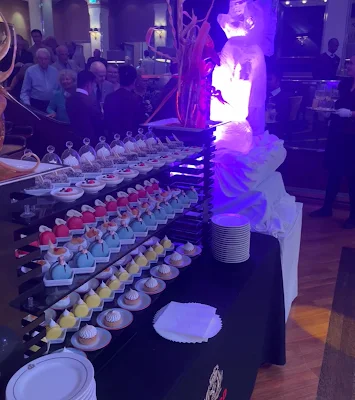















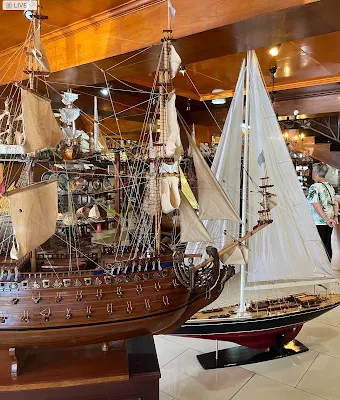











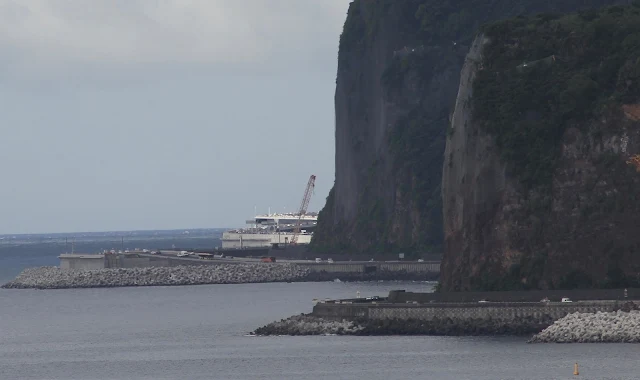






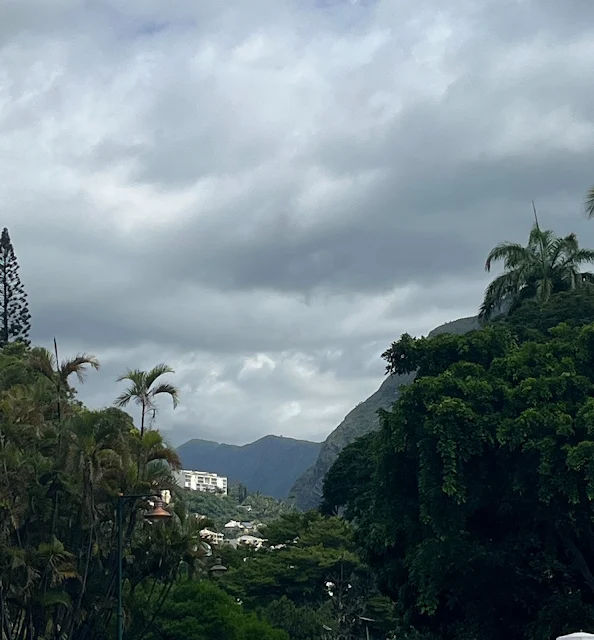
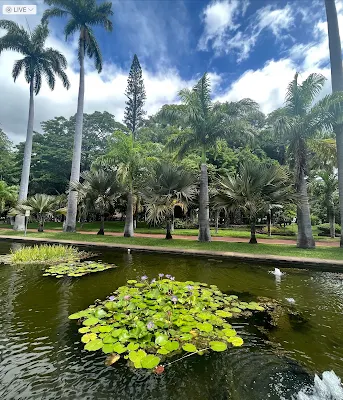







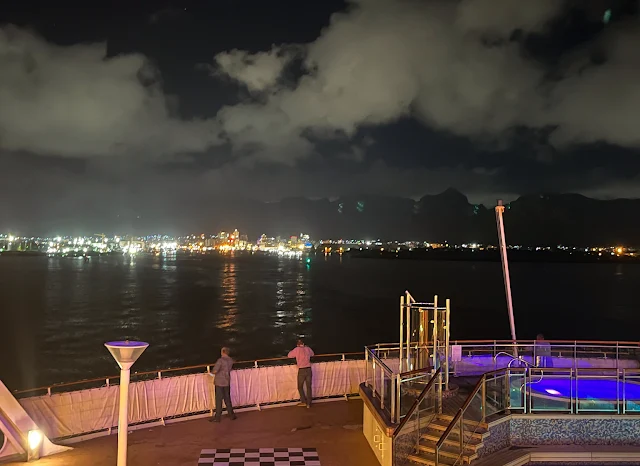







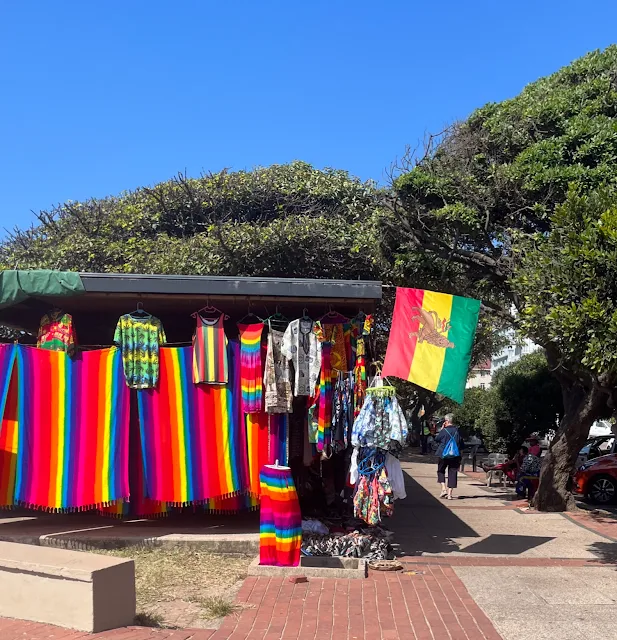






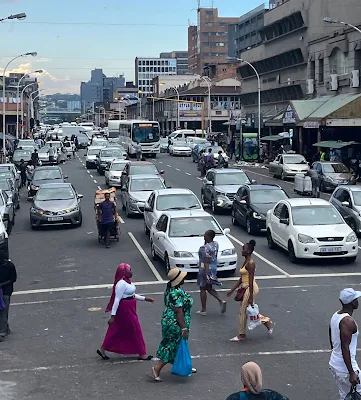









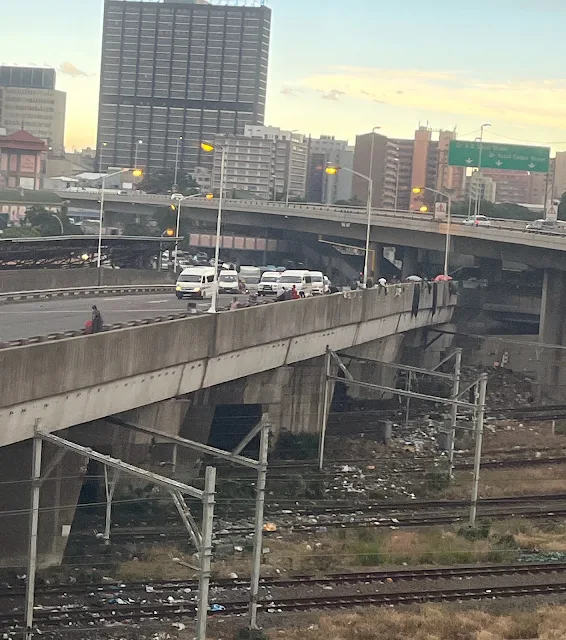
























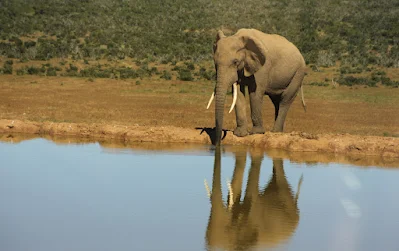




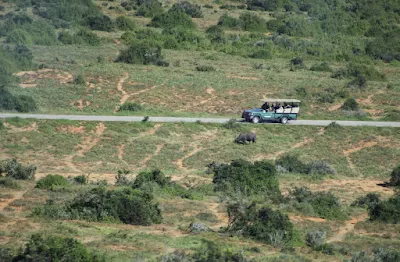














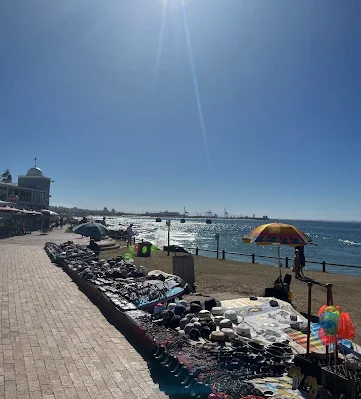




















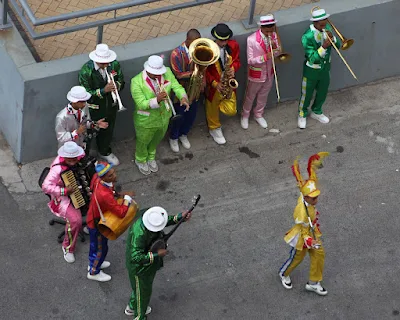

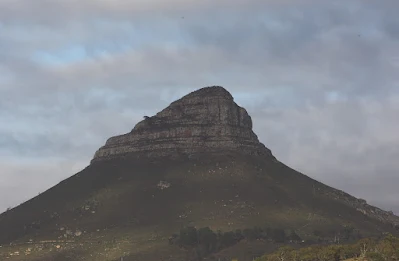







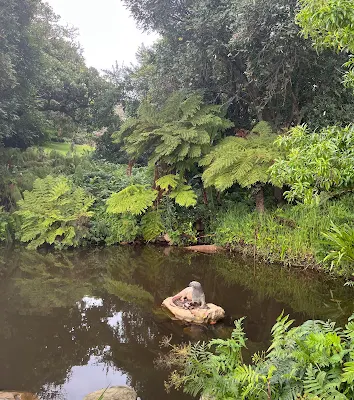




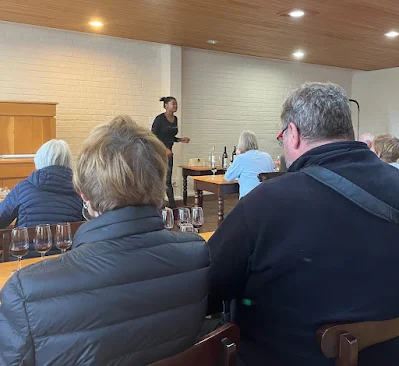












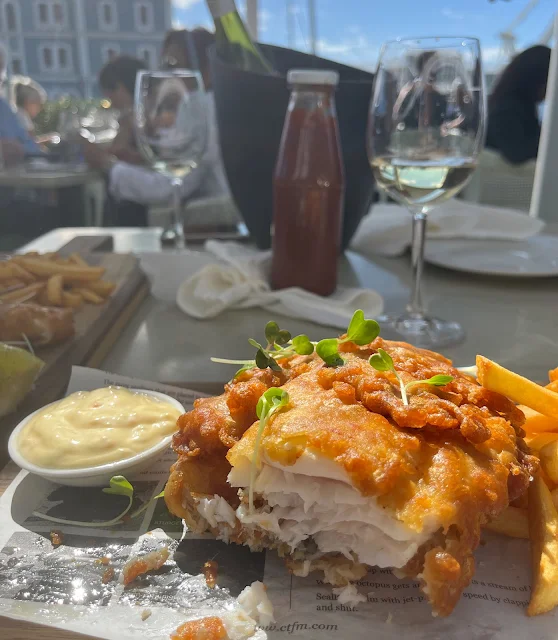












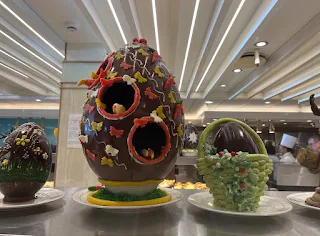


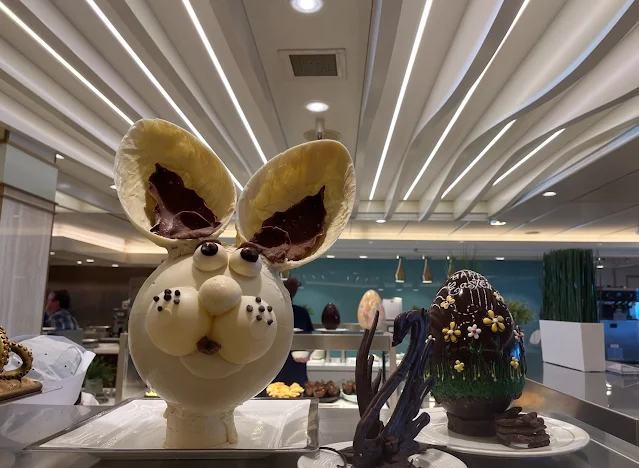









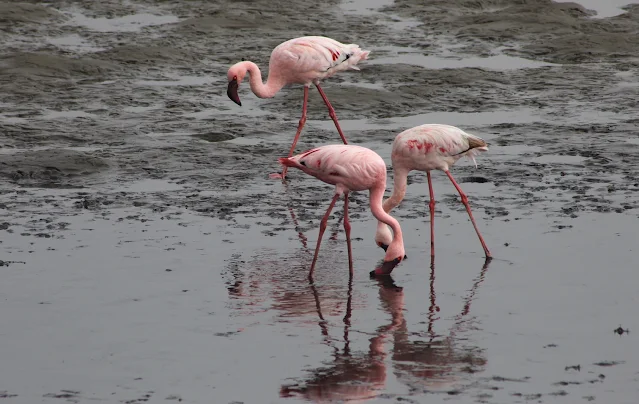















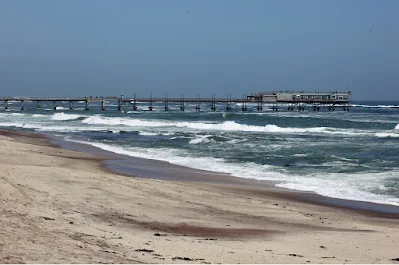

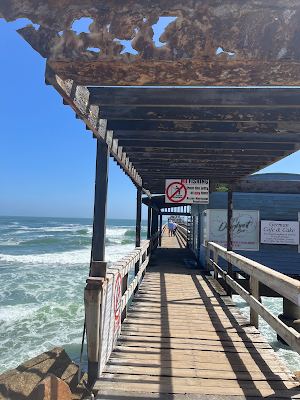












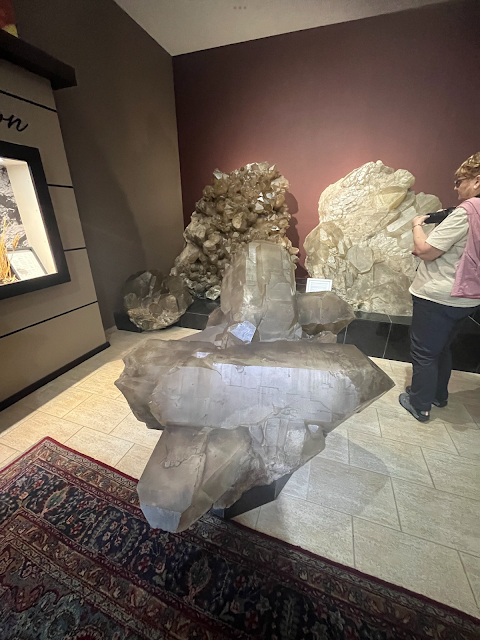















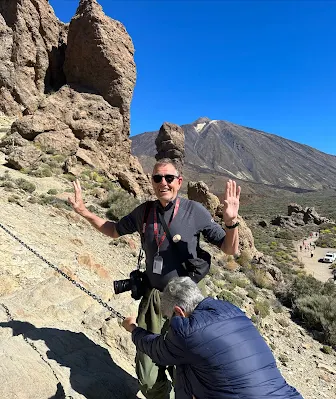














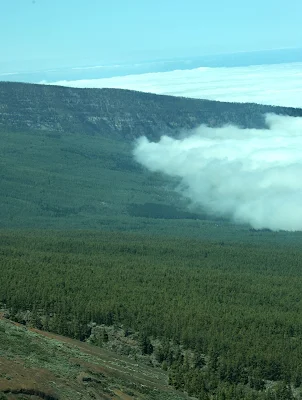
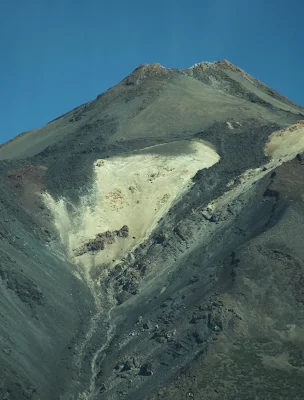
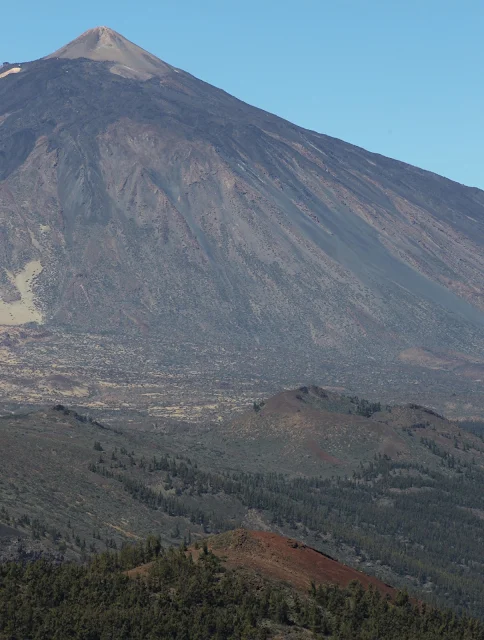
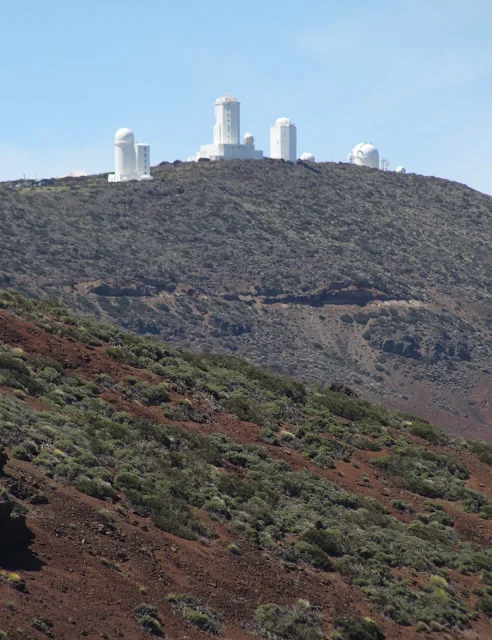
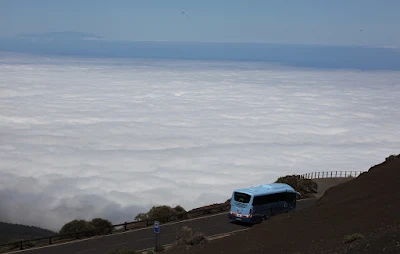
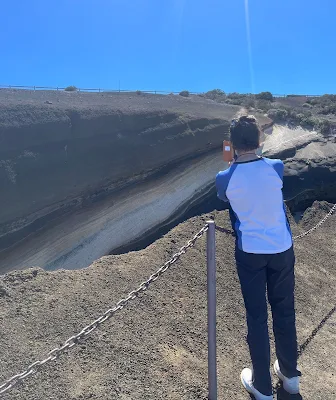



Comments
Post a Comment